Course #:
A01
Course Length:
10 Days
Course Price:
$1,350
Course Dates:
Contact Us for Details
Course Description
This FAI-compliant course is Part 1 in the Fundamentals of Contracting curriculum, which is designed to provide contracting professionals and other interested personnel with the skills, knowledge, and abilities to perform all actions required of the journeyman contract specialist in the procurement process.
Acquisition Planning I deals with many of the pre-solicitation activities necessary to properly plan and document an agency requirement. In addition to the Acquisition Plan itself, students will learn about requirements forecasting, market research, purchase request preparation, and other pre-solicitation activities.
The course is designed around a comprehensive set of learning objectives that are achieved through lecture-discussion, practical exercises, and case study techniques that expose the student to every aspect of the procurement planning process relevant to the journeyman contract specialist.
The target audience for this course consists of personnel involved in the contract specialist (GS-1102) career path, and other personnel involved in the planning of requirements and monitoring contract performance.
ACE Credit Recommendation
In the lower division baccalaureate degree category, 3 semester hours in Business Administration, Federal Acquisition, Public Administration, Procurement Management, or Purchasing.
Prerequisites
None
Course Objectives
Upon successful completion of this course, the student will be able to:
- Understand the contracting environment
- Determine the governments need
- Analyze the requirement
- Provide for adequate competition
- Plan for source selection
- Include the proper terms and conditions in a solicitation
Course Content
Lesson 1: Federal Framework for Contracting
- Describe the Federal framework for contracting.
- State the roles and responsibilities of the branches of government within the procurement process.
- Identify the statutes, regulations, court and administrative rulings, and other guidance that define the procurement system.
- Describe the relationship between the Federal budgetary and acquisition systems.
Lesson 2: Using the Federal Acquisition Regulation (FAR)
- Practice use of the FAR and supplementary regulations as acquisition tools.
- Recognize the constitutional and statutory authority for contracting.
- Explain how the FAR and agency supplemental regulations are organized, administered, and updated.
- Recognize the methods of procurement authorized for government contracting.
Lesson 3: Legal and Regulatory Principles of Contracting
Describe and apply:
- The elements of a contract.
- Law of agency.
- Goals and guiding principles of the Federal acquisition system.
- Standards of conduct and ethical principles.
Lesson 4: Purchase Requests and Requirements Documents
Given a purchase request and requirements documents:
- Determine if the documents are adequate for procurement.
- Identify the procedures for correcting deficiencies in a purchase request.
- Determine the type of funding, the date by which funds must be obligated, and whether the amount of funding is realistic.
- Determine if a requirement is commercial or non-commercial.
- Describe the process for reviewing and correcting deficiencies in requirements documents.
- Identify conditions for providing government property to a contractor or permitting use of government sources of supply.
Lesson 5: Market Research and Sources
Given a purchase request, acquisition history, and other requirements documents:
- Screen required sources.
- Conduct market research.
- Select sources for solicitation mailing lists.
Lesson 6: Lease vs. Purchase
Given a purchase request, acquisition plans, results of market research and acquisition histories:
- Recommend whether to solicit for lease, purchase, or both.
Lesson 7: Services
Given purchase requests for services:
- Determine whether the services may be acquired and any special requirements for the acquisition (e.g., wage determinations).
Lesson 8: Methods of Procurement
Given a purchase request and information from market research:
- Determine the method of purchasing or procurement.
Lesson 9: Small Business Considerations Given a contracting situation:
- Determine whether to set aside the procurement and the type of set aside to establish (e.g., 8(a), partial, total, HUBzone, very small business).
Lesson 10: Competition Requirements
Given purchase requests, requirements documents, and market data:
- Determine competition requirements for simplified acquisitions and contract actions over the simplified acquisition threshold.
Lesson 11: Contract Types
Given a variety of contracting situations:
- Determine the compensation arrangement that would best apportion expected risk (e.g., Firm Fixed Price, Fixed Price with Economic Price Adjustment, Cost Reimbursement, etc.).
- Recognize the alternative contractual instruments for recurring requirements (e.g., Indefinite Delivery contracts, Options, Multi-Year contracts).
- Identify when letter contracts are used.
Lesson 12: Selecting Evaluation Factors
Given a purchase request, acquisition history, market research data, and requirements documents:
- Select and incorporate price, price-related, and non-price evaluation factors for solicitations.
Lesson 13: Presolicitation Considerations
Given a purchase request, acquisition history, and market research information:
- Identify the appropriate types of contract financing and the requirement for a bond to protect the government.
Lesson 14: Publicizing Proposed Procurements
Given a purchase request and market research information:
- Identify the various techniques of publicizing proposed procurements and produce a synopsis.
Lesson 15: Solicitation Preparation
Given a purchase request, acquisition histories, market data, and presolicitation decisions:
- Explain oral solicitation procedures.
- Summarize the procedures for soliciting quotations to provide commercial items under FAR Part 13.
- Summarize the procedures for soliciting offers to provide commercial items under FAR Parts 145 and 15.
- Describe the procedures for soliciting offers to provide non-commercial items.
- Select the appropriate solicitation method for a procurement.
- Construct a commercial solicitation.
Lesson 16: Inquiries/ Amendments
Given a solicitation scenario:
- Explain the procedures for resolving inquiries pertaining to the solicitation.
- Summarize the process for conducting a pre-proposal conference.
- Prepare an amendment.

